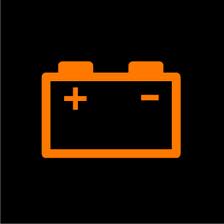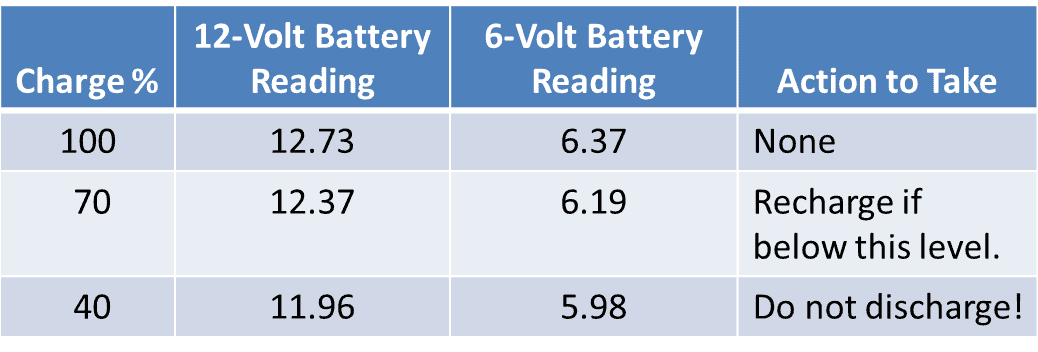 Inspect the Battery for Damage
Inspect the Battery for Damage
- Look for fluid on or around it to determine if it is leaking. Replace any leaky battery.
- Check for damage and good connections on the terminals, connectors, and cables. Replace any cables with frayed or cracked insulation and tighten any loose connectors.
- Look for corrosion and clean it off with a warm water/baking-soda mixture. Use 1 lb. of baking soda for every gallon of water. Use a post and clamp cleaner to clean the battery terminals and inside the cable clamps.
Check Electrolyte and Water Levels
- Check the battery’s electrolyte level on a monthly basis (and when you charge it). If you leave the boat plugged in with the converter battery charger charging the battery, check it every 2 months.
- When checking the electrolyte level, add water by removing the vent caps. Use only distilled or another mineral-free water. If the level is below the plates, fill it just until it covers the plates. Add no extra water until the battery is charged, then fill it no higher than 1/8 inch below the fill well.
Test the Battery’s Charge Status
 Test the battery’s state of charge by measuring the voltage with a digital DC voltmeter. Check the table at the right for required actions.
Test the battery’s state of charge by measuring the voltage with a digital DC voltmeter. Check the table at the right for required actions.- Use a three-stage charger, if possible, that gives the battery a bulk charge, absorption charge, and then a float charge.
- Use a charger with a charge rate between 10-13% of your battery’s 20-hour AH capacity.
- Recharge the battery immediately after use. Charge it in a well-ventilated area with no sparks or flames around.
- Check the electrolyte levels before and after you charge the battery.
- If you are storing the boat, disconnect the batteries and store them.
Learn more about lead batteries on boats.

Estelle Cockcroft
Catamaran Guru Co-Founder
Estelle Cockcroft is a seasoned sailor, catamaran expert, and co-founder of Catamaran Guru. With over 70,000 NM sailed and 30+ years aboard, she empowers new cruisers with expert advice on liveaboard life, yacht ownership, and ocean adventures.




